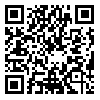Volume 30, Issue 4 (1-2018)
jdm 2018, 30(4): 192-199 |
Back to browse issues page
Download citation:
BibTeX | RIS | EndNote | Medlars | ProCite | Reference Manager | RefWorks
Send citation to:



BibTeX | RIS | EndNote | Medlars | ProCite | Reference Manager | RefWorks
Send citation to:
Zeighami S, Alikhasi M, Memarian M, Shirazi M H. Evaluation of torque loss in Co-Cr castable abutments after cyclic loading. jdm 2018; 30 (4) :192-199
URL: http://jdm.tums.ac.ir/article-1-5702-en.html
URL: http://jdm.tums.ac.ir/article-1-5702-en.html
1- Member of Dental Research Center, Dentistry Research Institute, Tehran University of Medical Sciences, Tehran, Iran; Assistant Professor, Department of Prosthodontics, School of Dentistry, Tehran University of Medical Sciences, Tehran, Iran
2- Member of Dental Research Center, Dentistry Research Institute, Tehran University of Medical Sciences, Tehran, Iran; Associate Professor, Department of Prosthodontics, School of Dentistry, Tehran University of Medical Sciences, Tehran, Iran
3- Assistant Professor, Department of Prosthodontics, School of Dentistry, Babol University of Medical Sciences, Mazandaran, Iran
2- Member of Dental Research Center, Dentistry Research Institute, Tehran University of Medical Sciences, Tehran, Iran; Associate Professor, Department of Prosthodontics, School of Dentistry, Tehran University of Medical Sciences, Tehran, Iran
3- Assistant Professor, Department of Prosthodontics, School of Dentistry, Babol University of Medical Sciences, Mazandaran, Iran
Abstract: (20916 Views)
Background and Aims: For the clinical success of implant-retained prostheses, fitness of matching components and stability of the applied torque to the implant-abutment assembly under dynamic occlusal loading is essential. The aim of this study was to evaluate the torque loss in Co-Cr castable abutments after cyclic loading.
Materials and Methods: 10 castable abutments were cast in Co-Cr alloy with similar size and height. Each specimen was mounted vertically on a separated implant using a 30 Ncm tightening torque. The detorque values of the abutments were evaluated after 10 min. The same tightening torque was applied to the abutments on their corresponding implants and cyclic loading was applied for 500,000 cycles to the implant-abutment assembly. The torque values after cyclic loading were recorded for each specimen. T-test analysis was conducted on scores from the groups.
Resultes: The results of this study showed that the percentage of torque loss in castable abutments was significantly increased after cyclic loading (P<0.001).
Conclusion: Misfit between the castable implant components can cause torque loss before and after cyclic loading. However, it is more appropriate to relate the results of this study to the screw loosening of the above mentioned abutments than judging their clinical performance.
Materials and Methods: 10 castable abutments were cast in Co-Cr alloy with similar size and height. Each specimen was mounted vertically on a separated implant using a 30 Ncm tightening torque. The detorque values of the abutments were evaluated after 10 min. The same tightening torque was applied to the abutments on their corresponding implants and cyclic loading was applied for 500,000 cycles to the implant-abutment assembly. The torque values after cyclic loading were recorded for each specimen. T-test analysis was conducted on scores from the groups.
Resultes: The results of this study showed that the percentage of torque loss in castable abutments was significantly increased after cyclic loading (P<0.001).
Conclusion: Misfit between the castable implant components can cause torque loss before and after cyclic loading. However, it is more appropriate to relate the results of this study to the screw loosening of the above mentioned abutments than judging their clinical performance.
Type of Study: Research |
Subject:
general
Received: 2018/02/27 | Accepted: 2018/02/27 | Published: 2018/02/27
Received: 2018/02/27 | Accepted: 2018/02/27 | Published: 2018/02/27
Send email to the article author
| Rights and Permissions | |
 |
This work is licensed under a Creative Commons Attribution-NonCommercial 4.0 International License. |




